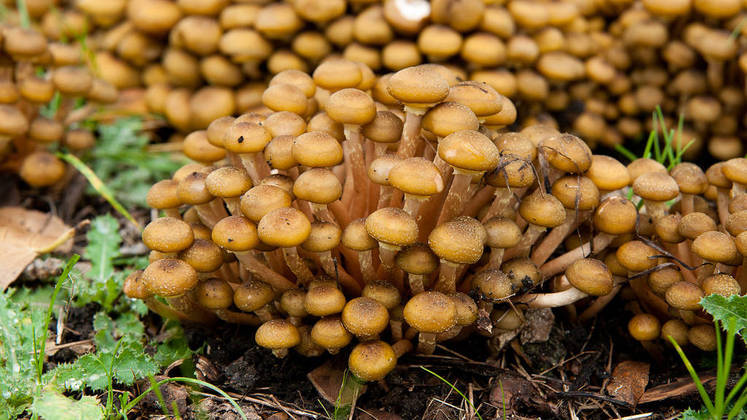The largest living organism in the world is not what you think it is. This is not a blue whale but a fungus. Armillaria ostoyae, also called the giant honey fungus, is the largest living organism on Earth in terms of area. Honey Mushroom also holds the record for the number of mushrooms in the world.
The largest living organism in the world
In 1998, a scientist discovered a massive mushroom while investigating the death of large numbers of trees in the Blue Mountains of Oregon, USA. This particular honey fungi covers 2,385 acres of Mahler National Forest. The scientist estimated the age at 2,400 years, but some of its fragments may be approximately 8,650 years.
A cute nickname might indicate that he is exceptionally innocent, but "Honey Mushroom" was the exact opposite of his name. The trees in the Mahler National Forest have died due to the honey mushroom fungus Armillaria ostoyae. When scientists examined the roots of infected trees in the forest, they found a white substance similar to latex paint. They suck water and carbohydrates from the trees. Armillaria fungus attaches to the tree's roots through hyphae, thin fibers that weave together and secrete digestive enzymes. The honey fungus mushroom attacks the tree and eventually kills it.
First Image / Source
Image / Source
About the largest living organism
Common names Armillaria ostoyae are "shoe" mushroom and the honey mushroom. It has strong black tendrils known as rhizomorphs, whose branches can stretch for miles in the soil, searching for wood for food. Rhizomorphs can be seen outside the root system of wind-felled trees and often under the bark. Scientists believe that it is the rhizomorphs that allow one Armillaria fungi organism to grow to this size. The honey fungus roots system that also constitutes a single organism.
Thus, you may encounter two different mushrooms on the ground many kilometers apart. However, in essence, they belong to the same underground organism. Therefore, all infected trees in the Mahler National Forest were affected by the genetically identical Armillaria Ostoyae. That is, honey fungus edible is a single organism that has spread and infected the trees in the forest.
Image / Source
Honey Fungus
The Armillaria mushroom family, commonly referred to as mushrooms, belongs to many types of mushrooms. The mushroom honey fungus is known to parasitize, colonize and decompose the roots of various trees and woody shrubs. Armillaria can also persist as a saprophyte in dead woody material for many years. It produces creamy or tan mushrooms in color, and these fruiting bodies grow above the ground.
The nickname "Honey mushrooms" is due to their color, not their taste. However, some would argue that the honeycup mushrooms have a sweet aftertaste. Although the Armillaria species in Mahler National Forest are huge in size and very old, they are mostly hidden from view. In the autumn season, honey cap mushroom grow for a short time, occasionally appearing at the foot of recently infected or dead trees.
Image /Source
Image /Source
Image / Source
Source | Wikipedia







No comments:
Post a Comment